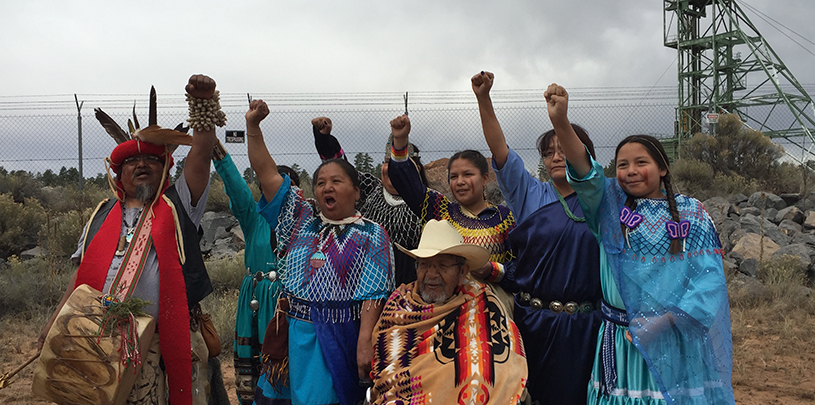
Nearly 50 years ago, Ed Abbey wrote, “most of what I write about in this book [Desert Solitaire] is already gone or going under fast.” What, then, can be left—five decades after the desert bard declared defeat?
Grand Canyon National Park is setting a record pace of more than five million visitors this year…and it is stimulating nearly three quarters of a billion dollars in regional revenues. So, by some measures, it’s still worth seeing.
But unfettered development is eating away at its edges. Federal and state agencies keep issuing pollution permits for uranium mines on public lands that drain directly into the Grand Canyon.
The Arizona Department of Environmental Quality has been re-issuing the same “aquifer protection permits” since the 1980s, despite mounting evidence of contamination. Similarly, the two federal agencies —the Forest Service and the Bureau of Land Management—that oversee the industrial intruders to our public lands steadfastly refuse to review operating permits that they approved two generations ago.
In 2010, the U.S. Geological Survey reported: “Fifteen springs and 5 wells in the region contain concentrations of dissolved uranium that exceed the U.S. Environmental Protection Agency maximum contaminant level for drinking water and are related to mining processes.” And yet, despite abundant new evidence, agencies continue to permit uranium mines to open without requiring common-sense precautions such as wells to monitor aquifers that supply Grand Canyon’s seeps and springs.
Twelve trucks a day hauling high-grade uranium ore from Canyon Mine will soon be permitted—legally—to spread radioactive dust along the same two-lane road that tourists travel daily to reach the canyon’s most popular entrance.
Elsewhere, entrepreneurs are making it easier for more and more people to witness what may eventually become less and less worth visiting. At what point do new attractions and mechanized access into the abyss take a permanent bite out of what makes the canyon truly grand?
What’s at Stake?
Looking for answers, The Emerald Mile author Kevin Fedarko and photographer Pete McBride set out on a trans-canyon trek last September. They tried to hike the entire 700-mile length of the canyon below the rim—through some of the most unforgiving wilderness on Earth.
It left them humbled and battered and 50 miles shy of their goal. Their story is now published in the September issue of National Geographic.
The National Geographic team divided their hike into segments, two of which are documented as videos. After exiting up a precipitous route paralleling the proposed tramway at the confluence of the Little Colorado and Colorado rivers, the team interviewed opponents from Save the Confluence on the rim. Later, they videotaped the Scottsdale developer who is strong-arming the Navajo Nation to approve the tram over the objections of local families.
During their third leg, they climbed out to visit Canyon Mine. They interviewed miners who guarantee that there is absolutely no possibility of uranium pollution escaping the mine’s permitted containment area. Outside its chain-link fence, they met with three generations of Havasupai citizens, whose sole source of drinking water and tourist income could be permanently destroyed if the miners are wrong. And since the U.S. Forest Service denies the need to require monitoring wells, it will be too late before we ever know the answer.
“Are We Losing the Grand Canyon” speaks to issues that the Grand Canyon Trust has been working on since 1985. We are grateful to the National Geographic team for shedding more light on them through their amazing journey.
Their story concludes: “If you’re reading this story decades from now, say in 2066, hopefully a vast Grand Canyon wilderness, in the truest sense of the word, still exists.”
Now’s your chance to ensure that day will come. Three uranium mines near the Grand Canyon have air quality control permits that are up for renewal.




